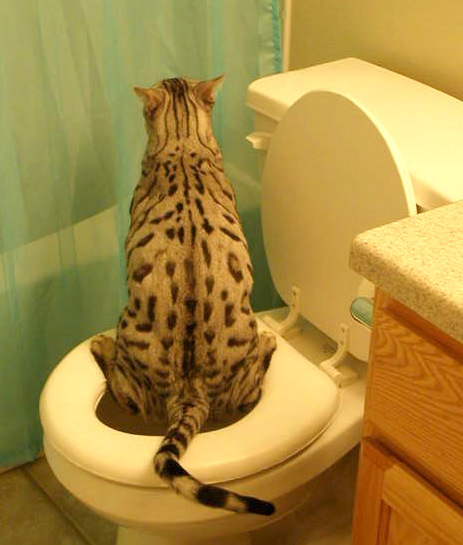This great article in the next paragraphs about How to Dispose of Cat Poop and Litter Without Plastic Bags is totally stimulating. Don't overlook it.

Intro
As pet cat owners, it's necessary to be mindful of exactly how we throw away our feline close friends' waste. While it might appear hassle-free to purge pet cat poop down the commode, this method can have damaging repercussions for both the atmosphere and human health.
Environmental Impact
Purging cat poop presents unsafe microorganisms and parasites right into the water system, positioning a significant danger to marine ecological communities. These contaminants can adversely impact marine life and concession water high quality.
Health Risks
Along with ecological issues, flushing cat waste can likewise pose health and wellness risks to people. Pet cat feces may consist of Toxoplasma gondii, a bloodsucker that can trigger toxoplasmosis-- a potentially severe illness, especially for expectant women and people with damaged body immune systems.
Alternatives to Flushing
Fortunately, there are safer and much more responsible means to dispose of pet cat poop. Think about the following options:
1. Scoop and Dispose in Trash
The most typical method of dealing with pet cat poop is to scoop it into an eco-friendly bag and throw it in the garbage. Make certain to utilize a dedicated litter scoop and take care of the waste quickly.
2. Use Biodegradable Litter
Select biodegradable cat trash made from products such as corn or wheat. These trashes are eco-friendly and can be securely disposed of in the trash.
3. Hide in the Yard
If you have a backyard, take into consideration hiding feline waste in an assigned location away from vegetable gardens and water resources. Make sure to dig deep enough to prevent contamination of groundwater.
4. Set Up a Pet Waste Disposal System
Invest in a pet garbage disposal system specifically created for cat waste. These systems utilize enzymes to break down the waste, decreasing odor and ecological influence.
Conclusion
Responsible pet dog possession expands past providing food and shelter-- it additionally involves appropriate waste management. By avoiding purging cat poop down the commode and choosing different disposal methods, we can lessen our ecological footprint and safeguard human health and wellness.
Why Can’t I Flush Cat Poop?
It Spreads a Parasite
Cats are frequently infected with a parasite called toxoplasma gondii. The parasite causes an infection called toxoplasmosis. It is usually harmless to cats. The parasite only uses cat poop as a host for its eggs. Otherwise, the cat’s immune system usually keeps the infection at low enough levels to maintain its own health. But it does not stop the develop of eggs. These eggs are tiny and surprisingly tough. They may survive for a year before they begin to grow. But that’s the problem.
Our wastewater system is not designed to deal with toxoplasmosis eggs. Instead, most eggs will flush from your toilet into sewers and wastewater management plants. After the sewage is treated for many other harmful things in it, it is typically released into local rivers, lakes, or oceans. Here, the toxoplasmosis eggs can find new hosts, including starfish, crabs, otters, and many other wildlife. For many, this is a significant risk to their health. Toxoplasmosis can also end up infecting water sources that are important for agriculture, which means our deer, pigs, and sheep can get infected too.
Is There Risk to Humans?
There can be a risk to human life from flushing cat poop down the toilet. If you do so, the parasites from your cat’s poop can end up in shellfish, game animals, or livestock. If this meat is then served raw or undercooked, the people who eat it can get sick.
In fact, according to the CDC, 40 million people in the United States are infected with toxoplasma gondii. They get it from exposure to infected seafood, or from some kind of cat poop contamination, like drinking from a stream that is contaminated or touching anything that has come into contact with cat poop. That includes just cleaning a cat litter box.
Most people who get infected with these parasites will not develop any symptoms. However, for pregnant women or for those with compromised immune systems, the parasite can cause severe health problems.
How to Handle Cat Poop
The best way to handle cat poop is actually to clean the box more often. The eggs that the parasite sheds will not become active until one to five days after the cat poops. That means that if you clean daily, you’re much less likely to come into direct contact with infectious eggs.
That said, always dispose of cat poop in the garbage and not down the toilet. Wash your hands before and after you clean the litter box, and bring the bag of poop right outside to your garbage bins.
https://trenchlesssolutionsusa.com/why-cant-i-flush-cat-poop/

As a keen reader about Can You Flush Cat Poo or Litter Down the Toilet?, I figured sharing that portion was a good thing. Are you aware of anybody else who is excited by the topic? Be sure promote it. Thanks a lot for your time. Visit again soon.
Visit Website